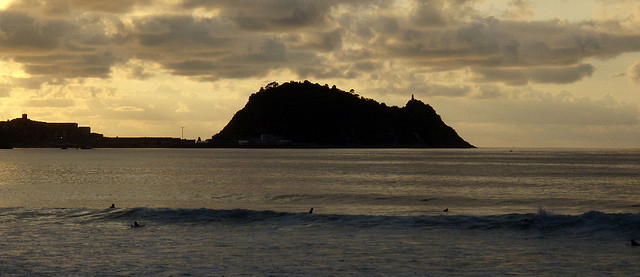
One of the most requested services by our clients when they visit Euskadi is to tour the towns of the Basque Coast. And nobody is disappointed. Knowing the fishing villages of this abrupt coast is without doubt a pleasant and memorable experience, both because of the landscapes that open up before our eyes and because of the people who raise them and who have made fishing, agriculture and industry their way of life.
The route along the Basque coast can obviously begin, both in the east and in the west and will depend on where we are staying. Both San Sebastián and Bilbao have excellent hotels where you can spend a few days to get to know the whole Basque geography. For both options you can count on the Taxiberia transfer service, so you can get to your hotel with the maximum comfort.
We will start our route from the east, where the Bidasoa river runs in the bay of Txingudi and flows into the Cantabrico. The bay that separates and unites at the same time the towns of the French coast and the Spanish coast, is a protected wetland and of great ecological value since it is a zone of passage and refuge for numerous migratory birds. If we want to know much better this area, we can make one of the many routes that will discover us both the natural riches of the bay as well as its history and culture.
The first coastal town we will visit is Hondarribia, a municipality located between the Txingudi bay and the Jaizkibel mountain. Hondarribia is a town of fishing tradition with a history marked by its border character and, therefore, strategic position in the conflicts between France and Spain. Both aspects are perfectly reflected in the current physiognomy of the old town of the town.
On the one hand we can visit the neighborhood of the marina, where is the fishing port, which is still active although the local economy is now more focused on tourism and where we can walk among the traditional fishermen’s houses and enjoy some pintxos in their bars. On the other hand, the old part of the town is surrounded by a defensive wall and crowned by the castle of Carlos V, now converted into the Parador Nacional. The old part of Hondarribia offers beautiful corners, with old houses emblazoned and full of color with their balconies full of flowers. The military buildings that we can visit are completed with the Guadeloupe Fort, located on Mount Jaizkibel, very close to the sanctuary of the same name.
We can not say goodbye to Hondarribia without visiting its beach and the marina. It is an ideal area to walk and enjoy the magnificent views, both of the bay of Txingudi, with the French town of Hendaya just opposite, and of the Jaizkibel mountain that protects the beach on the west.
We head west following the coast and we leave behind the port area of Pasajes and the capital of Guipuzcoa, Donostia, a city that deserves an article in a near future. We pass by Orio and Zarautz and we stop in Getaria, another Gipuzkoan town with a long seafaring tradition. We will recognize it from afar thanks to the peninsula known as “El Ratón de Getaria” (mouse of Getaria) by its characteristic shape reminds us of the profile of this rodent.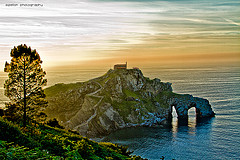
Getaria is known for being the birthplace of Juan Sebastian Elcano, the first sailor to sail around the world in the 16th century. Another famous son of the municipality was Cristobal de Balenciaga, the famous couturier who conquered Paris with his haute couture designs during the last century and that we can see in the modern museum that has been inaugurated in his native town.
Another attraction of Getaria, besides its beach and the town itself, is the gastronomy. We are in the right place to enjoy a grilled fish in the traditional style, washed down with the famous txakoli of Getaria, a white wine typical of these lands and that little by little and thanks to the efforts of the local producers has earned a place among the most well-known Designations of Origin in Spain.
We continue with our rush toward the west and perform a new stop in Lekeitio, already in Bizkaia. The town is located in a small bay formed by the mouth of the river Lea and protected by the island of San Nicolas. This is how the fishing port, the neuralgic center of a town that faces the sea and that has always lived on its offerings, is protected. At the foot of the port is the spectacular Gothic church of Santa Maria de la Asuncion, with its characteristic buttresses and flying buttresses crowned by pinnacles. In the interior, the main altarpiece in the Spanish-Flemish or Elizabethan Gothic style stands out.
Before arriving at our next destination, it is worth making a quick visit to Elantxobe, a small fishing village characterized by the abruptness of its location. It is a succession of stepped houses, flanking the slope that ends in the small harbor built in the shelter of the mass of Cape Ogoño.
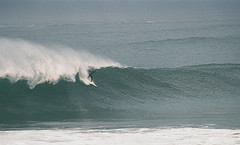 We follow the coastal route until we reach Mundaka, in the Urdaibai Biosphere Reserve, a protected area formed by the estuary of the mouth of the Oka river. It is an area full of sand and rich fauna that deserves a visit by itself, but we will leave for another occasion, focusing this time on Mundaka, a town located on the left bank of the estuary.
We follow the coastal route until we reach Mundaka, in the Urdaibai Biosphere Reserve, a protected area formed by the estuary of the mouth of the Oka river. It is an area full of sand and rich fauna that deserves a visit by itself, but we will leave for another occasion, focusing this time on Mundaka, a town located on the left bank of the estuary.
Mundaka is known for its left wave, bringing thousands of surfers from all over the world. A scoring event for the ASP WORLD TOUR, the world’s highest championship of this sport so visually attractive, is also being held in the town. For that reason, it is rare that there are always several people surfing in these waters, regardless of the year of the year in which we are.
In Mundaka we are struck by its old town, which is pleasant to walk among narrow streets and old fishermen’s houses. We can also get closer to enjoy the views over the estuary and its sandy areas from the Hermitage of Santa Catalina, where we will also see the remains of a defensive fortress of the nineteenth century.
We headed our steps again towards the west, and after passing the village of Bermeo, which also deserves a stop on our route, we arrive at a mythical point of the Basque coast, the Hermitage of San Juan de Gastelugatxe, a mandatory stop for tourists and locals ..This hermitage is built on the top of an island linked to the mainland by a bridge on the access road that leads to it and which is an attraction in itself. The road has more than 200 steps
we must overcome to reach the hermitage, a construction of the tenth century from where you can enjoy a spectacular view of the Biscayan coast.
In addition, the area is within a protected biotype, which also includes the nearby coast of Cape Matxitxako, the northernmost point of the Basque Autonomous Community and from whose lighthouse you can sometimes see large cetaceans that cross this area of the Cantabrian Sea.
It’s time to put an end to our route. After passing through coastal towns such as Baki or Plentzia, we reach the Abra and Bilbao, the final point of our journey today. We will also dedicate a space to this city, economic engine of the Basque Country and host of numerous events, and that has enough attractions to visit it with more time. Remember that this route is suggested by Taxiberia, based on the experience of our drivers, but our customers can develop a different route, more according to their tastes and interests and we will be happy to perform.
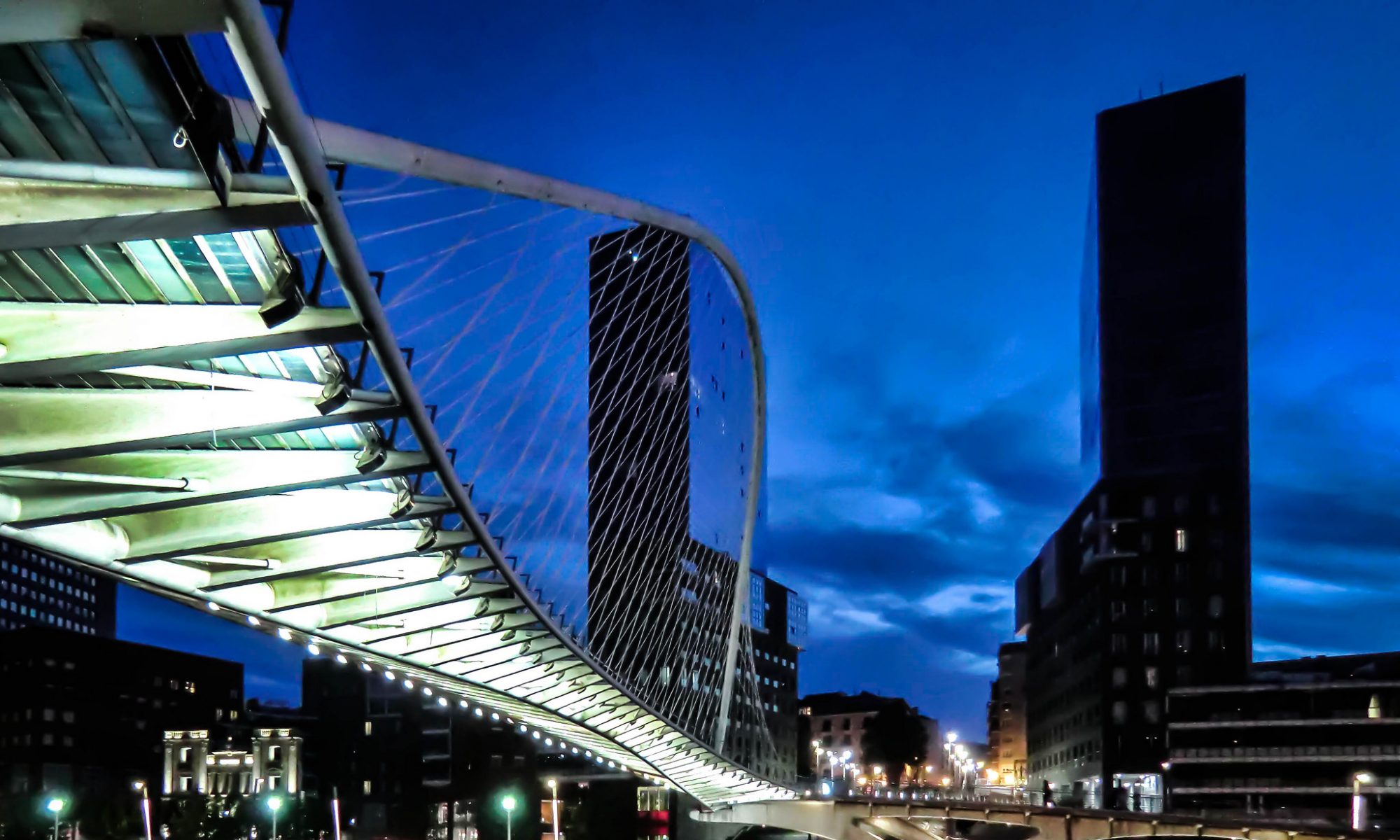

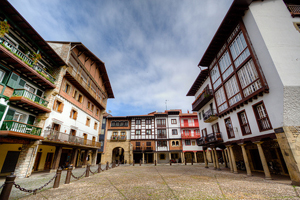


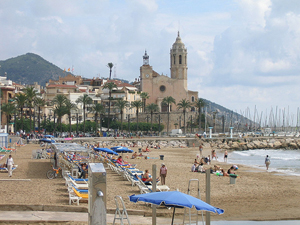 Another of the most visited destinations because of the LGBT community in Spain is the catalan city of
Another of the most visited destinations because of the LGBT community in Spain is the catalan city of 